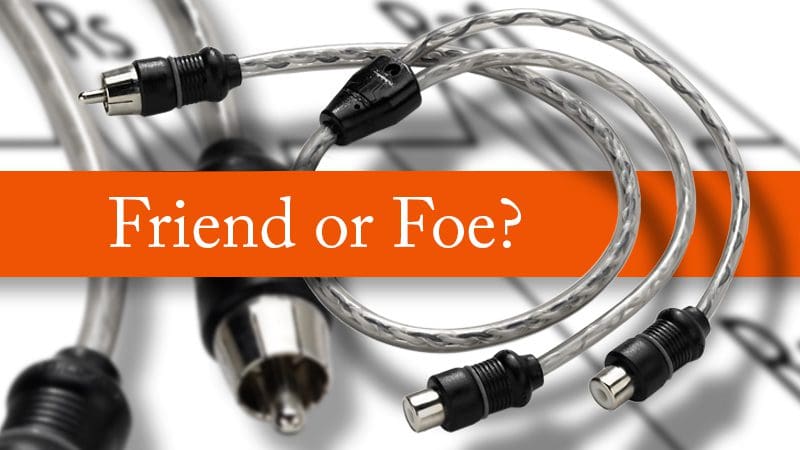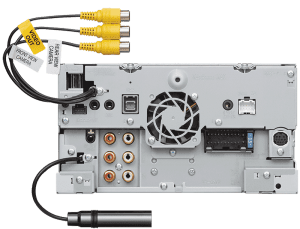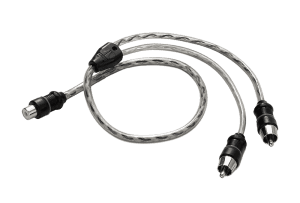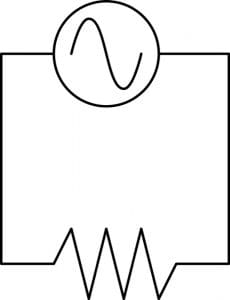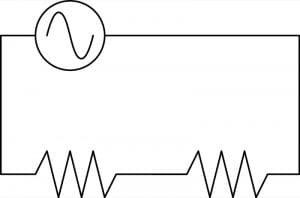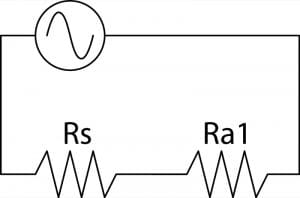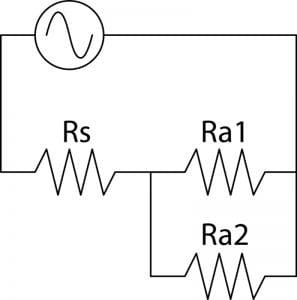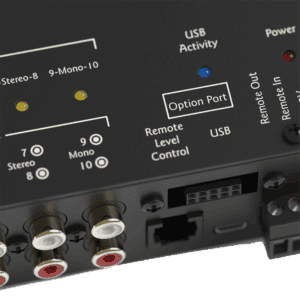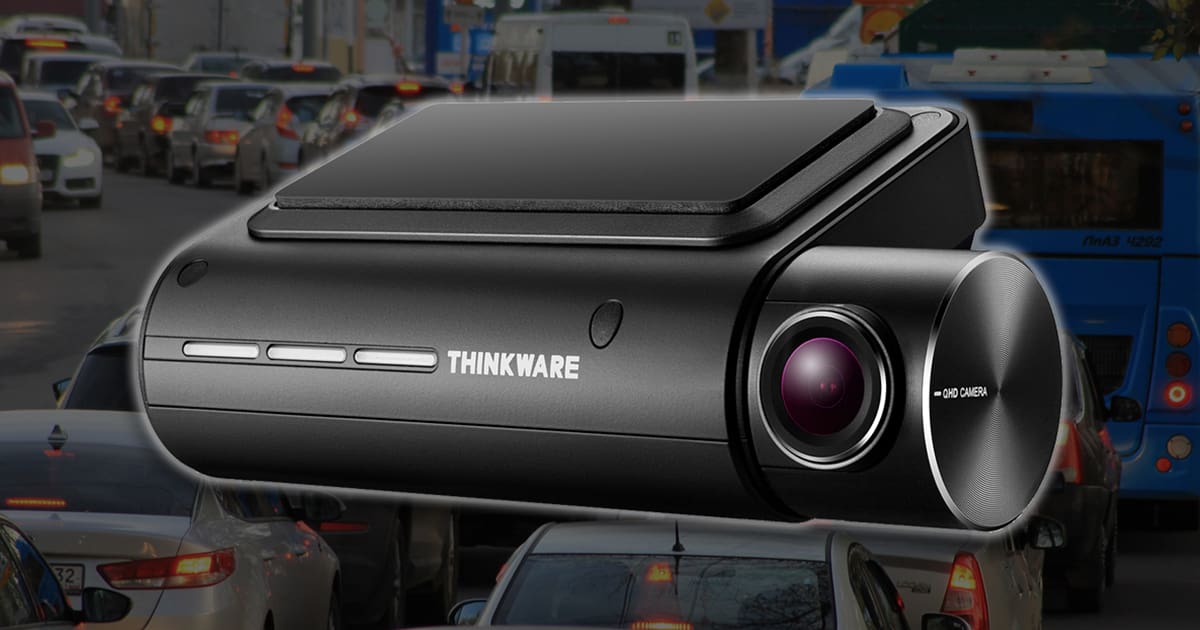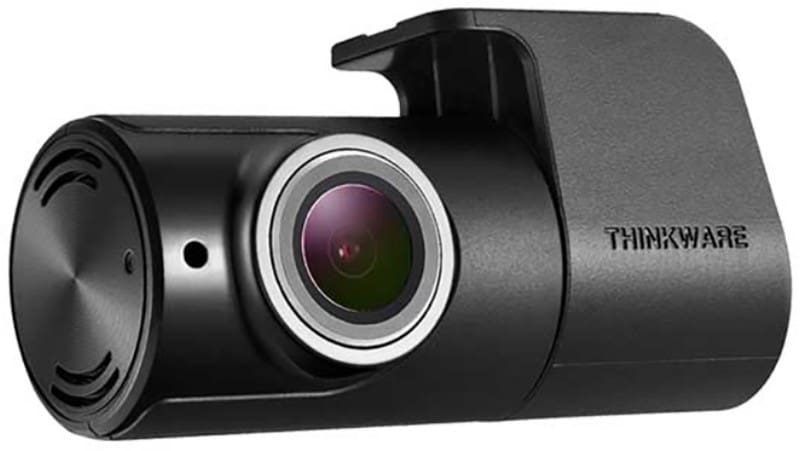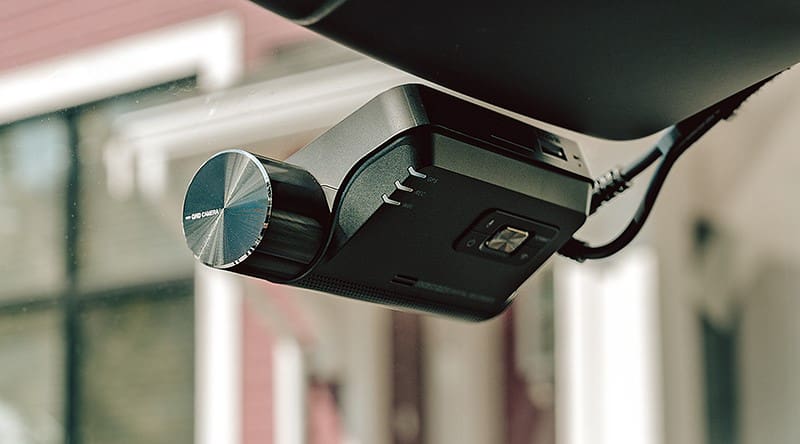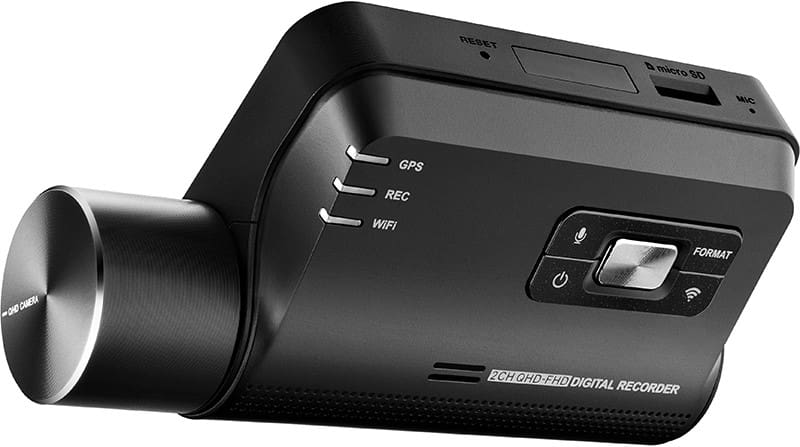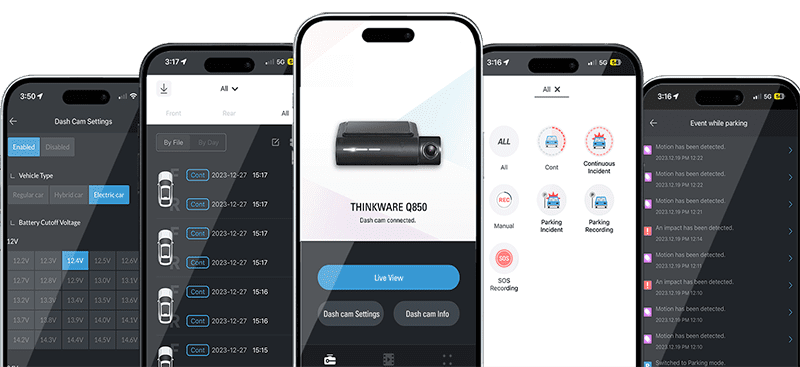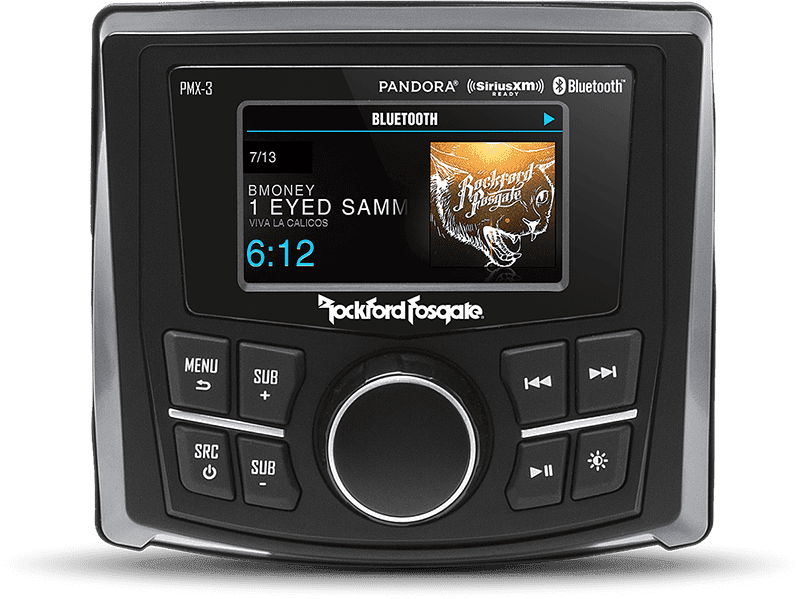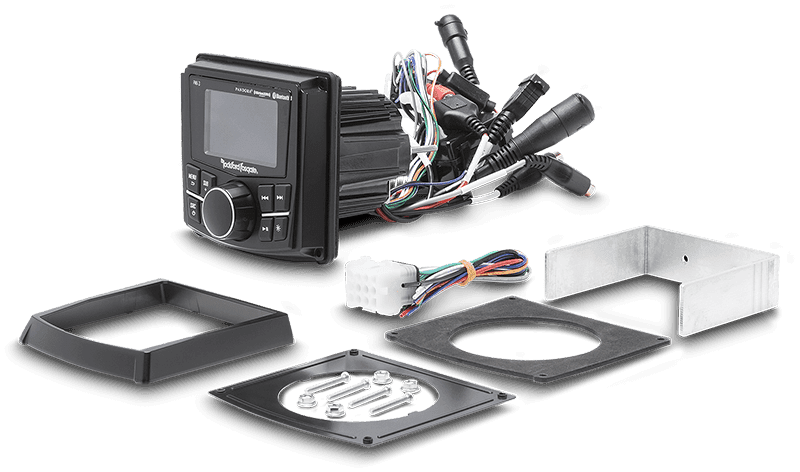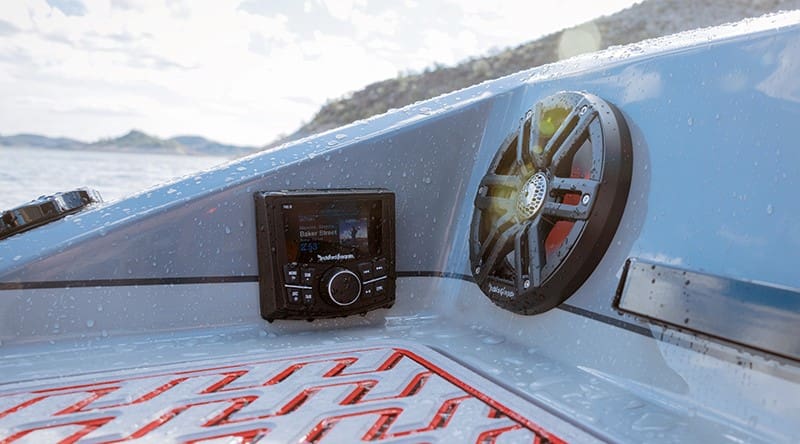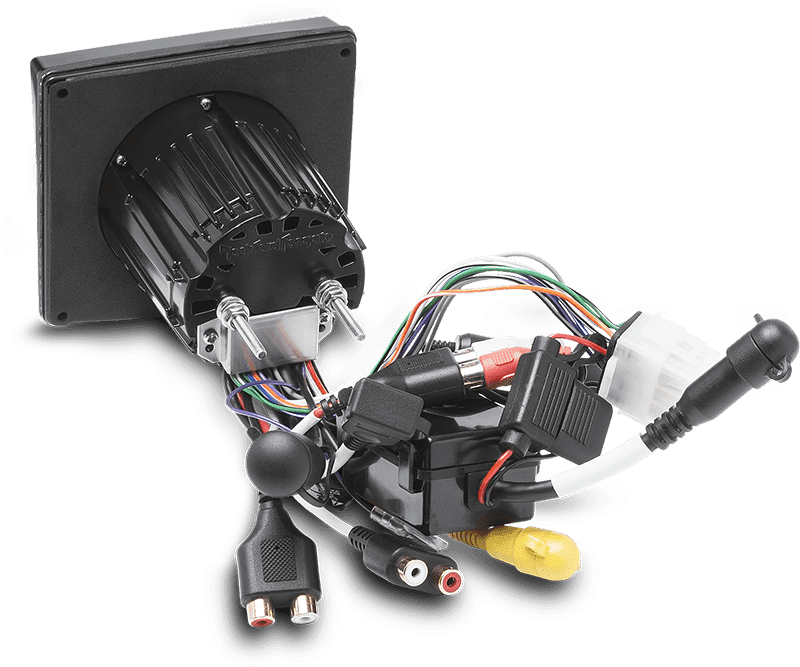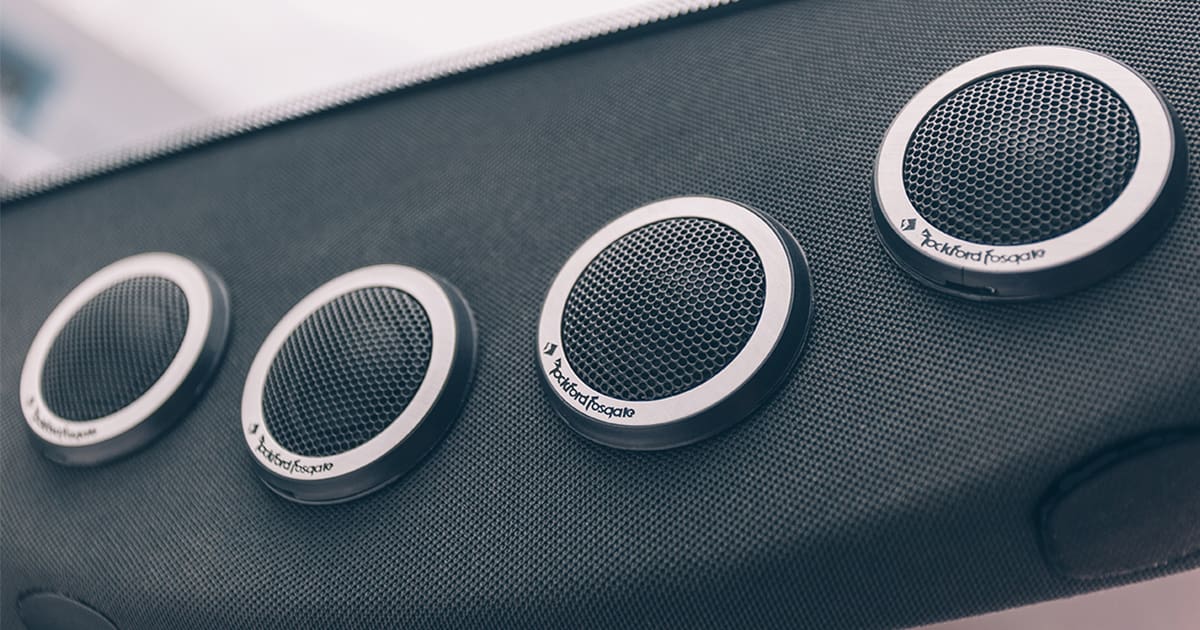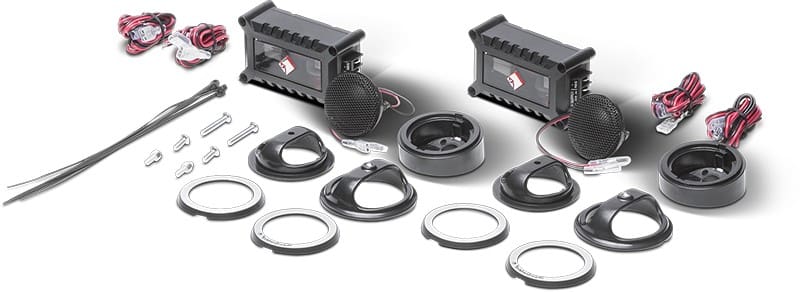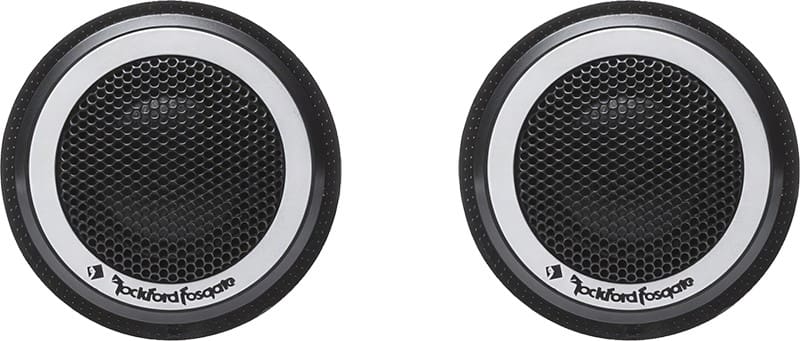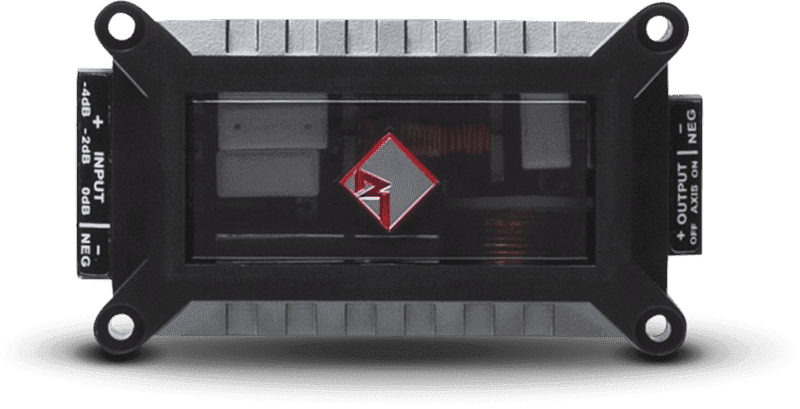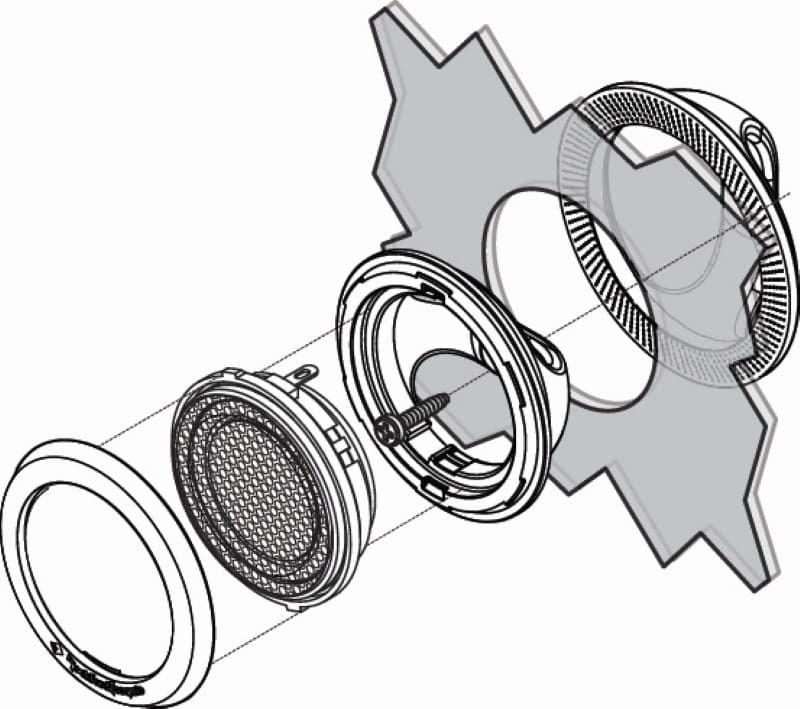Installing a marine radio in your boat is the best way to improve your day on the water. If your boat has bow seating, a swim platform, a cuddy, or a full cabin, adding a wired remote to the source unit at the helm makes it easier to control the music. The marine audio experts at Rockford Fosgate offer several wired remote solutions to upgrade their marine multimedia receivers. Let’s check out the PMX-1R wired remote control.
Rockford Fosgate PMX-1R Design
The PMX-1R is a compact wired remote with a rotary encoder, eight buttons, and a 2.7-inch color display. Its functions mimic the controls on the PMX-2, PMX-3, and PMX-5CAN radios. The remote also works with the PMX-8BB and the older PMX-5 source unit.
The remote measures 4.2 inches in height, 4.5 inches wide, and only 2.5 inches deep. Its shallow depth makes it a popular choice for instrument clusters where space behind the mounting panel is an issue. In those applications, a source unit like the nearly identical-looking PMX-3 could be installed in the galley or nav station.
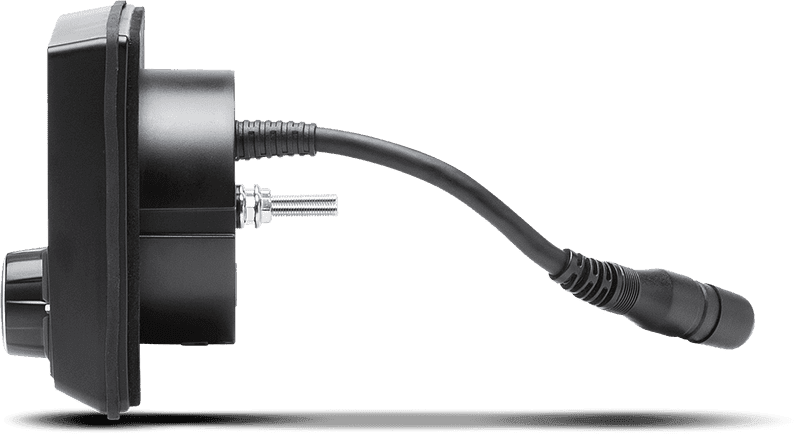
The display features the same TFT wet-bonded design used in the PMX-3 source unit. This construction method allows for great visibility and vibrant colors in bright conditions.
At the center of the remote is a rotary encoder with a large knob that serves as the system volume control. The knob can be pushed to access additional functions. Speaking of additional functions, the eight rubber-coated buttons provide direct access to track or channel selection, source selection, and even dimmer control. Knowing how Rockford Fosgate fanatics think, dedicated SUB + and SUB – buttons provide direct access to adjust the subwoofer output. Things couldn’t be more intuitive.
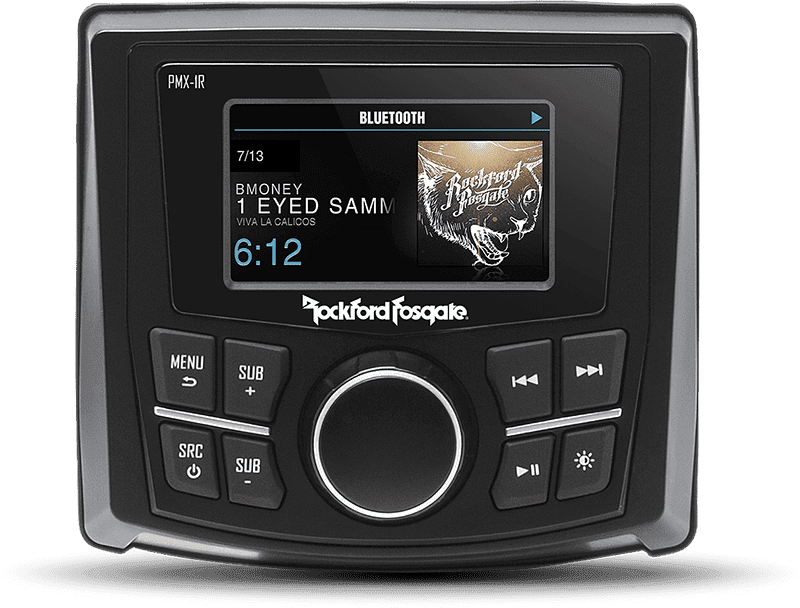
Remote Wiring and Installation Options
Your installer will find a multi-pin DIN connector on the remote’s rear. This plug connects to any Rockford Fosgate marine source units mentioned above using the PMX16C 16-foot, PMX25C 25-foot, or PMX50C 50-foot extension cables sold separately. Multiple remotes can be used with a single source unit with the addition of the PMXYC Y-cable. Rockford Fosgate marine radios will support up to three remotes and as much as 100 feet of cable in the installation. That’s not 100 feet per remote, by the way.
The remote mounts through a three-inch hole in whatever panel you choose. Your installer can clamp the remote with the aluminum support bracket. Alternatively, they can use the four stainless steel mounting screws to affix the remote from the front. A trim ring is provided to conceal the mounting hardware, giving the remote a clean and tidy appearance. A rubber seal ensures water won’t get into the boat through the mounting hole in either solution.
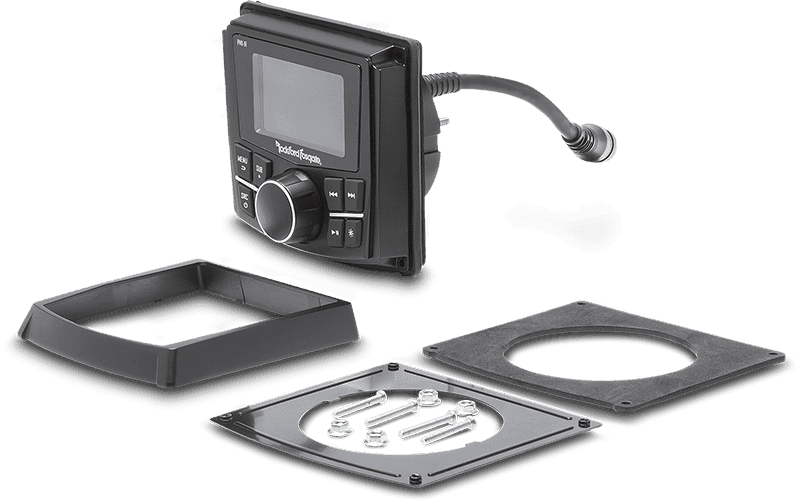
Element Ready™ Design
Crucially, all Rockford Fosgate marine source units and remotes feature their Element Ready™ design. Where most companies stop with weather resistance ratings like the IPX6 found on the front panel, things go several steps further with the PMX-1R and its brethren. The remotes are tested in a UV light exposure chamber, which mimics years of prolonged sun exposure. The materials and design must remain colorfast and not turn chalky, fade, or dry out. Further, salt fog testing ensures the radios and remotes can be used in saltwater without concern over corrosion.
Rockford Fosgate takes things even further with its vibration and impact testing. When crashing over the waves, your boat can experience impacts of well over 5 G’s, with emergency situations exceeding 7 G’s. All products carrying the Element Ready™ symbol are tested on a vibration bench to ensure the design and internal components can withstand these stresses. When the Product Specialist you are working with tells you that purchasing a Rockford Fosgate marine source unit and remote is an investment in quality, they have the proof to support that statement.
Unlimited Installation Applications
Aside from marine applications, recreational vehicles, motorhomes, travel trailers, campers, and toy haulers are popular applications for Rockford Fosgate marine source units and remotes. A radio can be installed in the dash, and then additional remotes can be added in the kitchen, master suite, or even outside to control a set of marine-grade speakers. If you have a four-seater side-by-side, a PMX-1R could be added to a Stage 5 Polaris Ranger audio system to give the backseat crew as much control as the driver.
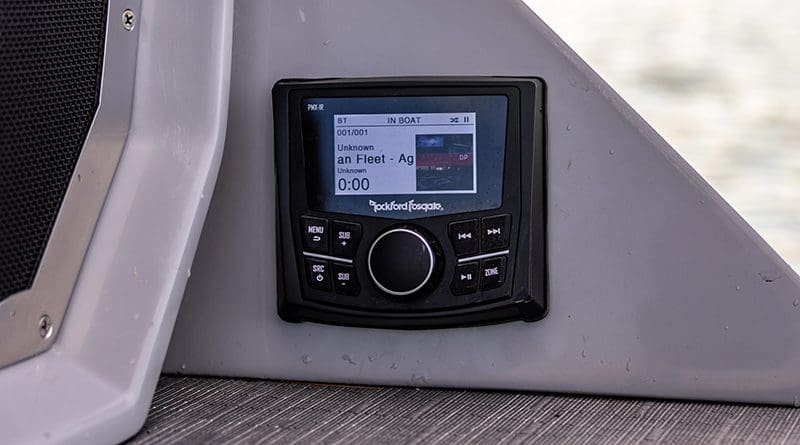
Upgrade Your Marine Radio with the Rockford Fosgate PMX-1R Today!
Whether you are starting to build an audio system from scratch or looking to upgrade an existing installation, adding a remote like the PMX-1R is an excellent solution. If space is limited, the PMX-0 remote without an LCD display is another option. To find the best solution for your application, drop by a local authorized Rockford Fosgate retailer today. You can find a shop near you using the online locator tool on their website. As always, be sure to follow our fanatical friends from Tempe on Facebook, Instagram, and, of course, YouTube.
This article is written and produced by the team at www.BestCarAudio.com. Reproduction or use of any kind is prohibited without the express written permission of 1sixty8 media.

